Related Research Articles
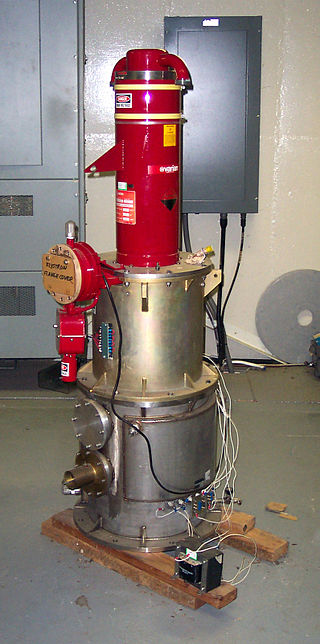
A klystron is a specialized linear-beam vacuum tube, invented in 1937 by American electrical engineers Russell and Sigurd Varian, which is used as an amplifier for high radio frequencies, from UHF up into the microwave range. Low-power klystrons are used as oscillators in terrestrial microwave relay communications links, while high-power klystrons are used as output tubes in UHF television transmitters, satellite communication, radar transmitters, and to generate the drive power for modern particle accelerators.

A traveling-wave tube or traveling-wave tube amplifier is a specialized vacuum tube that is used in electronics to amplify radio frequency (RF) signals in the microwave range. It was invented by Andrei Haeff around 1933 as a graduate student at Caltech, and its present form was invented by Rudolf Kompfner in 1942–43. The TWT belongs to a category of "linear beam" tubes, such as the klystron, in which the radio wave is amplified by absorbing power from a beam of electrons as it passes down the tube. Although there are various types of TWT, two major categories are:
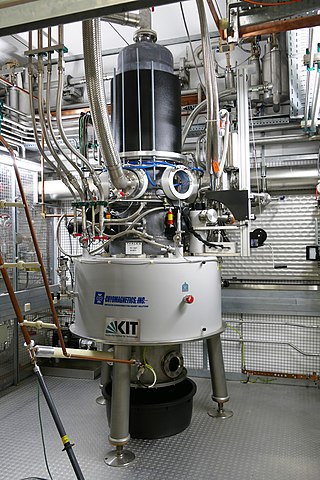
A gyrotron is a class of high-power linear-beam vacuum tubes that generates millimeter-wave electromagnetic waves by the cyclotron resonance of electrons in a strong magnetic field. Output frequencies range from about 20 to 527 GHz, covering wavelengths from microwave to the edge of the terahertz gap. Typical output powers range from tens of kilowatts to 1–2 megawatts. Gyrotrons can be designed for pulsed or continuous operation. The gyrotron was invented by Soviet scientists at NIRFI, based in Nizhny Novgorod, Russia.

Albert Wallace Hull was an American physicist and electrical engineer who made contributions to the development of vacuum tubes, and invented the magnetron. He was a member of the National Academy of Sciences.
David B. Rutledge is the Kiyo and Eiko Tomiyasu Professor (em.) of Engineering and former chair of the Division of Engineering and Applied Science at the California Institute of Technology (Caltech), United States. His earlier work on microwave circuits has been important for various advances in wireless communications and has been useful for applications such as radar, remote sensing, and satellite broadcasting. He also covers research in estimating fossil-fuel supplies, and the implications for alternative energy sources and climate change.
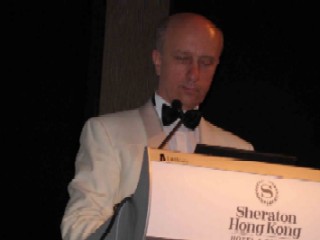
Adam Waldemar Skorek is a Canadian University professor and a Polish engineer. He was born in Krzczonów, Lublin, Poland.
The IEEE Marie Sklodowska-Curie Award is a Technical Field Award that was established by the IEEE Board of Directors in 2008. This award may be presented for outstanding contributions to the field of nuclear and plasma sciences and engineering. This award may be presented to an individual, individuals on a team, or up to three multiple recipients. Recipients of this award receive a bronze medal, certificate, and honorarium. This award was presented for the first time in 2011.

Russell Harrison Varian and Sigurd Fergus Varian were American brothers who founded one of the earliest high-tech companies in Silicon Valley. Born to theosophist parents who helped lead the utopian community of Halcyon, California, they grew up in a home with multiple creative influences. The brothers showed an early interest in electricity, and after independently establishing careers in electronics and aviation they came together to invent the klystron, which became a critical component of radar, telecommunications and other microwave technologies.
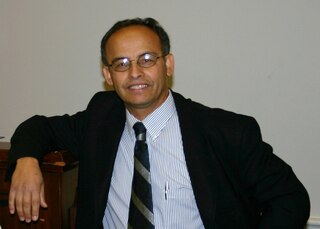
Mounir Laroussi is a Tunisian-American scientist. He is known for his work in plasma science, especially low temperature plasmas and their biomedical applications.

Anthony L. Peratt is an American physicist whose most notable achievements have been in plasma physics, plasma petroglyphs, nuclear fusion and the monitoring of nuclear weapons.

Payam Heydari is an Iranian-American Professor who is noted for his contribution to the field of radio-frequency and millimeter-wave integrated circuits.
Richard J. Temkin is a plasma physicist and researcher on plasma-heating gyrotrons and other electromagnetic devices involving high-powered microwaves or terahertz radiation.
Ronald M. Gilgenbach is the Chair of the Nuclear Engineering and Radiological Sciences Department at the University of Michigan. His career is in the field of Plasma Physics, including some of the earliest tokamak plasma research in the United States. Gilgenbach has been at the University of Michigan since 1980 and has held his Chair position since 2010. He is also the lead faculty of the Plasma, Pulsed Power, and Microwave Laboratory at the University of Michigan.
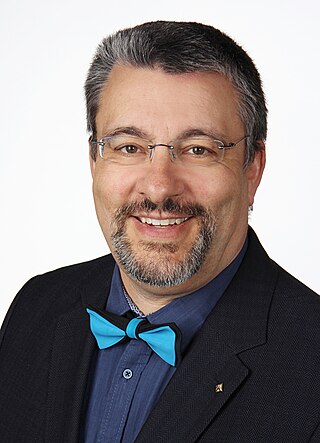
Stefan Ritt is a German physicist and head of the muon physics group at the Paul Scherrer Institute, Aargau, Switzerland. He is member of the MEG experiment and co-spokesperson of the Mu3e experiment. He is best known for the development of the DRS4 Switched Capacitor Array Chip, as primary author of the MIDAS Data Acquisition System and as author of the ELOG Electronic Logbook. He is co-author of two patents related to Switched Capacitor Array Circuits and their calibration.

Moeness G. Amin is an Egyptian-American professor and engineer. Amin is the director of the Center for Advanced Communications and a professor in the Department of Electrical and Computer Engineering at Villanova University.

Edl Schamiloglu is an American physicist, electrical engineer, pulsed power expert, inventor, and distinguished professor in the department of electrical and computer engineering at the University of New Mexico. He has been known in public media for his expertise in the design and operation of directed-energy weapons. He is also known for his assessment on the possible origins of alleged health damages presumably caused on U.S. embassy personnel in Cuba in 2016 as part of the Havana syndrome incident. He is the associate dean for research and innovation at the UNM School of Engineering, where he has been a faculty since 1988, and where he is also special assistant to the provost for laboratory relations. He is also the founding director of the recently launched UNM Directed Energy Center. Schamiloglu is a book author and co-editor, and has received numerous awards for his academic achievements. He is a Fellow of the Institute of Electrical and Electronics Engineers and the American Physical Society. Starting on July 1, 2024, Schamiloglu was selected as Editor-in-Chief of the IEEE Transactions on Plasma Science, where he succeeds Steven J. Gitomer who has held that role for over 40 years.
Hulya Kirkici is a Turkish-American electrical engineer whose research interests span a wide range of topics including insulators for aerospace applications, pulsed power, the use of advanced materials in plasma switches and vacuum electronics, pulsed plasma, and beam shaping for lasers and lidar. She is professor and chair of the Electrical and Computer Engineering Department at the University of South Alabama.
Janet L. Barth is a retired American radiation engineer who became the first female chief of engineering at NASA's Goddard Space Flight Center.
Jane M. Lehr is an American electrical engineer whose research concerns pulsed power, liquid dielectrics, and ultra-wideband transmission. She is a professor of electrical and computer engineering at the University of New Mexico, the former president of the IEEE Nuclear and Plasma Sciences Society, and a coauthor of the book Foundations of Pulsed Power Technology.
References
- 1 2 3 "Monica Blank", Distinguished Lecturers, IEEE Nuclear & Plasma Sciences Society, retrieved 2023-05-08
- ↑ Vacuum Electronics Technical Committee, IEEE, retrieved 2023-05-08
- ↑ 2020 Newly Elevated Fellows (PDF), IEEE, archived from the original (PDF) on 2019-12-04, retrieved 2023-05-07
- ↑ Dr. Monica Blank has been selected as the recipient of the 2020 Plasma Science and Applications (PSAC) Award, IEEE Plasma Science, November 19, 2020, retrieved 2023-05-08– via Facebook